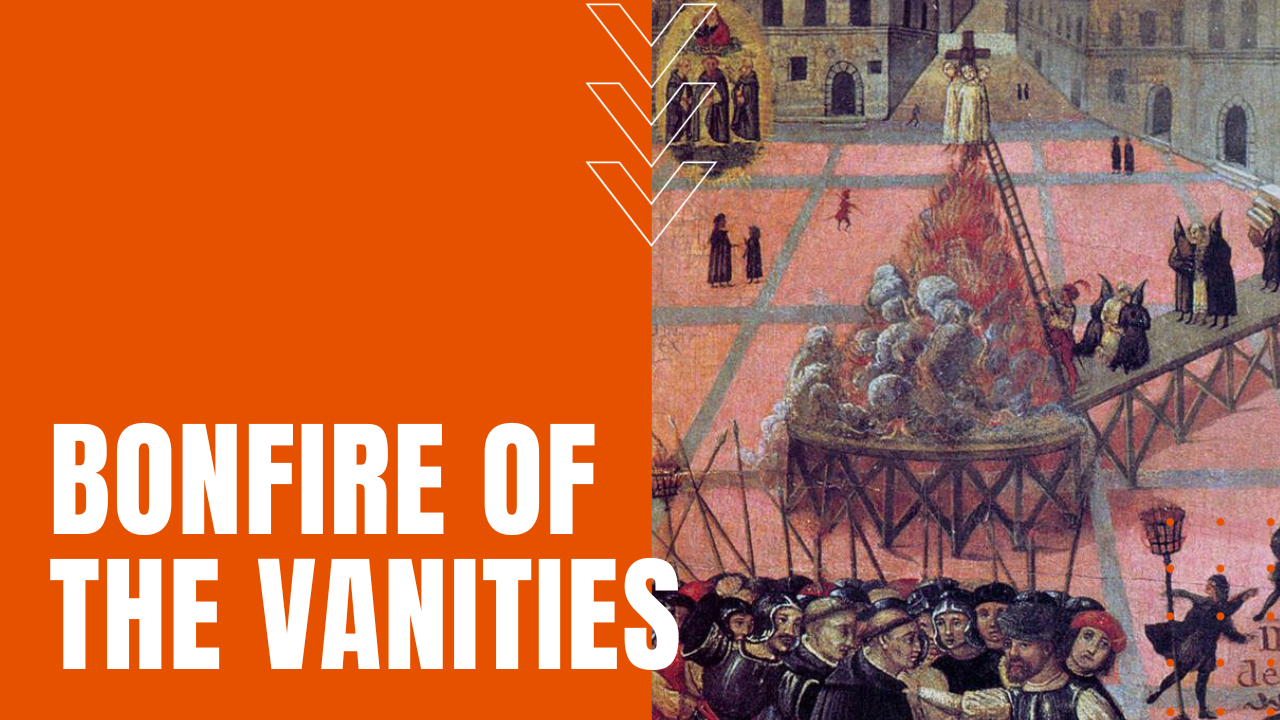Bonfire of the Vanities

During the 13th through 15th centuries in Europe—at the dawn of the Renaissance—Dominican monks hosted a string of what historians have named “bonfires of the vanities,” intended to rid parishioners of sinful yet coveted objects that the Catholic church labeled as heretical distractions from a Christian’s obligation to focus on salvation through Christ.
Satanic Distractions
Yet the spark behind the largest bonfire began in 1490 Florence Italy, when the city’s ad-hoc religious leader, Girolama Savonarola first began preaching about the coming Apocalypse, which he believed would occur in 1500, unless Florentines rejected Satan’s manipulating distractions, such as certain works of contemporary art, books, cosmetics, dresses and more. Chief among Savonarola’s complaints were religious artworks incorporating images of wealthy, albeit egotistical patrons who had commissioned the work, melding their mortal likenesses into depictions of key figures and events within the old and new testaments.
Burn it or Burn in Hell
Calling it “modern and corrupt,” Savonarola also took particular issue with female biblical figures in many paintings of the day, and in the months leading up to his bonfire of the vanities in early 1497, even Sandro Botticelli added a good number of his paintings to the growing amassment of bonfire accelerants. While no one knows what possibly famous works of art Botticelli added to the bonfire, fortunately for art lovers the world over, his most famous works such as Birth of Venus, Primavera and Venus de Medici thankfully survived. At the same time, the powerful Medici family had lost the respect of average Florentines, leading mobs inflamed by Savonarola’s preaching to burn down the Medicis’ bank, after the family had fled the city in fear for their lives.
A Fall From Grace
Dressed in white gowns sporting red crosses and garlands, an enormous bonfire was erected in the Piazza del Signoria, under a mounted image of Satan, leading to the mother of all bonfires on February 7th, 1497, which in turn led to Savonarola’s fall from grace, when more sensible Florentines saw the event as a threat to their heritage and culture. His downfall was made complete by his repeated criticisms of the papacy, which ultimately led to his execution by the Catholic Church, making the Bonfire of the Vanities, a stunning low point during the high water years of the Italian Renaissance.
